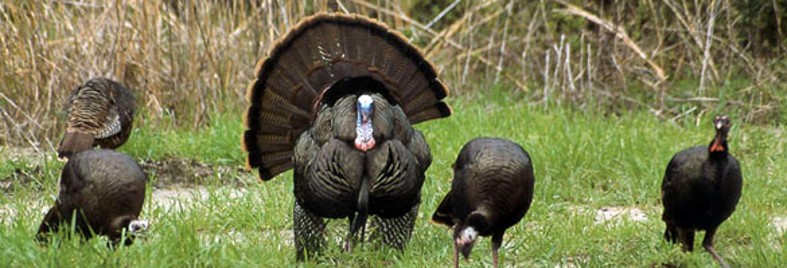
by Shep Eubanks | Mar 27, 2020

Wild Turkeys in Chufa planted in Gadsden County – Photo by Shep Eubanks UF IFAS
Wildlife management continues to be an area of growing interest on our local farms and ranches and has the potential to generate significant additional income to the farm enterprise. It is also an opportunity to practice good stewardship of the natural resources that we have in abundance here in the Panhandle. Each spring I get many phone calls from landowners wanting to know what they can plant to encourage wild turkeys to utilize their property more and to enhance the quality of their wild turkey habitat. Chufa is one such plant that wild turkeys love like most of us love ice cream and it is easy to grow and will provide feed for turkeys for several months.
What is chufa? Chufa is an African variety of the native nutsedge, which is a warm season perennial plant. However, chufa is not as aggressive as the native nutsedges and typically will not create problems with succeeding crops that you might plant after it. The actual foliage of the plant is not utilized by wildlife, but turkeys, hogs, ducks, and raccoons love the underground tubers that the plant produces. Each individual plant can produce 10 to 75 peanut kernel sized tubers (see photo 1) that wildlife utilize. These tubers are high in carbohydrates and protein, and they are also edible by humans, having a sweet taste similar to almonds or raw peanuts.
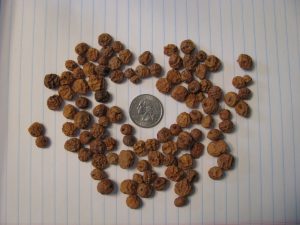
Photo 1. Chufa seed for planting – Photo by Shep Eubanks UF IFAS
Turkeys will usually begin to dig the chufas up in early fall as soon as the above ground leaves turn brown. In Florida, they will dig and eat the nuts from fall throughout the winter and into spring. (see photo 2 of turkeys feeding in a spring chufa patch)
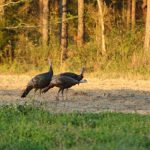
Photo 2. Turkeys scratching up chufas – Photo by Shep Eubanks UF IFAS
If you are considering planting chufa there are several considerations to take into account. The chufa plant typically grows well anywhere that field corn can be grown. You should soil test the area you intend to plant and lime to a pH between 6.0 – 6.5. On most soils this requires 1 ton of lime per acre. Recommended planting dates are April 1st through June 30th in the panhandle area. Earlier plantings will provide higher yields, whereas later plantings typically will provide foraging for wildlife later into the following spring. To maximize use by turkeys into the spring I would recommend looking at planting in June. Chufa can be planted later than June 30th some years but remember that it takes the plant approximately 90 days to produce mature tubers and this must be accomplished prior to frost/cold weather. Plant the seed into a well prepared and fertilized seedbed. The seeding rate for chufa is 40 – 50 pounds per acre broadcast or 30 pounds per acre drilled on a 36 inch row spacing. Strive for a coverage of 3 or 4 seed per square foot. When broadcasting the seed, set your disk to cut about 4 inches deep. This will cover the seed to an approximate depth of 2 inches which is ideal for chufa. Normal fertilizer recommendations would be 200 pounds of 17-17-17 per acre or equivalent at planting. When the plants are 6 – 12 inches high (approximately 1 month old) you should top dress with 100 pounds of actual N per acre (300 pounds of ammonium nitrate) to maximize yields. With high costs of fertilizer this may not be as desirable, but yields will be smaller if fertilizer rates are reduced. For weed control options on chufa plantings consult with your local County Extension Agent for up-to-date recommendations.
Small plantings are feasible (less than ¼ acre) if wild hogs are not present. It has been my experience that best results are obtained with ½ acre or larger plantings. Chufa is a plant that will do a good job of reseeding itself, sometimes for several years. Reseeding can be accomplished by simply disking the area of the previous planting between April and the end of June and following fertilizer recommendations for the initial planting. For most locations it is advisable to move the chufa plot to a different location after the second crop to avoid problems with soil pests. (see photo 3 of typical planting).
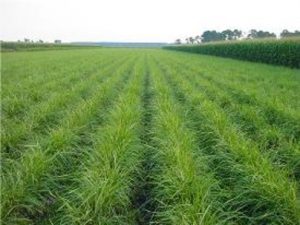
Photo 3. Chufa planting – Photo by Shep Eubanks UF IFAS
If you have never planted chufas before for your turkeys, you may want to pull some up or disk a row up in the fall after the tops have died back. This will assist the turkeys in finding the plants if they have never encountered it before. Once they do find it you can expect to find tremendous areas of scratching. Quite often the plots will literally look like a mortar or bombing range where the turkeys dig down to get the chufas!
For more information consult with your local Extension Agent .
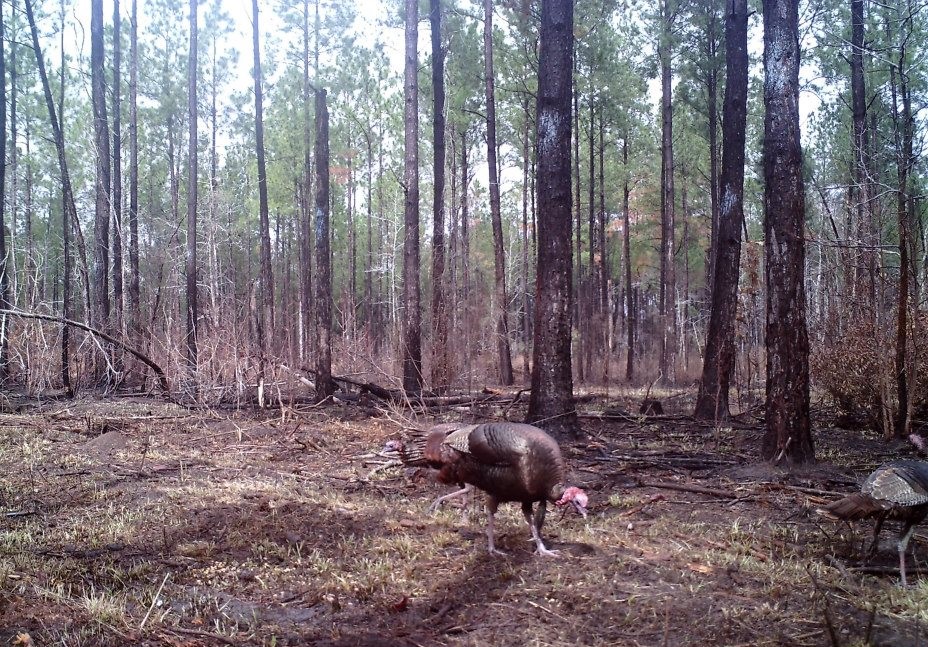
by Shep Eubanks | Nov 14, 2019
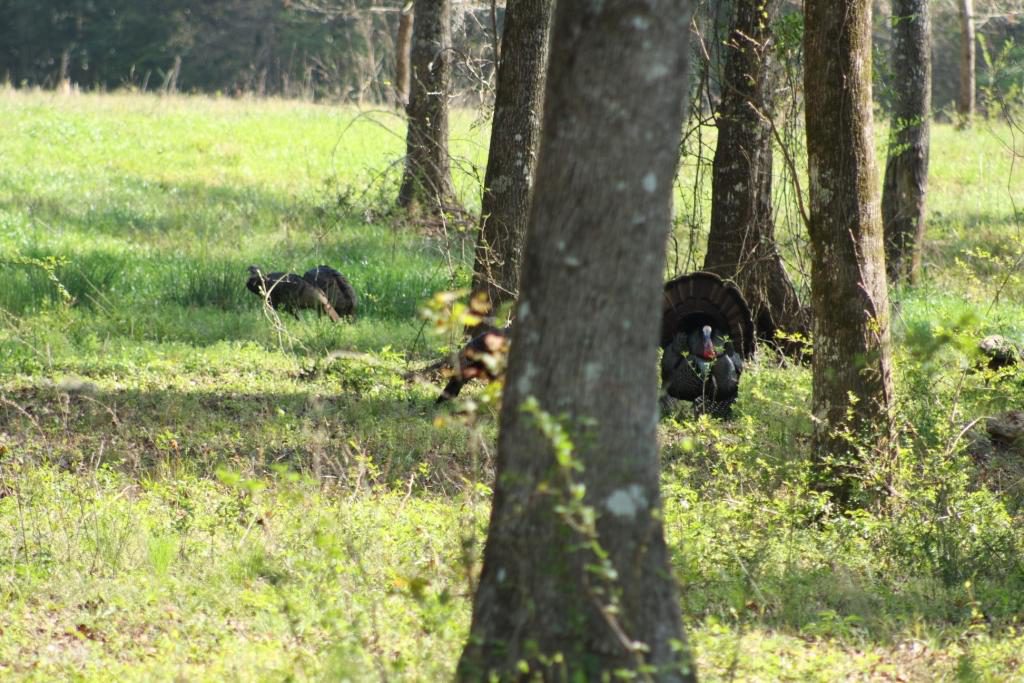
Eastern Wild Turkey Gobbler in Gadsden County – photo by Shep Eubanks UF/IFAS
The above picture of a strutting Eastern Wild Turkey is a sight that many hunters look forward to seeing every spring here in the panhandle of Florida. In order to manage wild turkeys and their habitat it is good to understand some basic facts about their biology.
Wild turkeys are considered a generalist species, meaning that they can eat a wide variety of foods, primarily seeds, insects, and vegetation. They prefer relatively open ground cover so that they can see well and easily move through their surroundings, but they aren’t picky about where they live as long as it provides them year-round groceries and safety. They are also a very adaptable species. Turkeys prefer low, moderately open herbaceous vegetation (less than three feet in height) that they can see through, or see over, and through which they can easily move in relatively close proximity to forested cover. Such open habitat conditions help them see and avoid predators and these areas will typically provide sufficient food in terms of edible plants, fruit, seeds, and insects.
Wild turkeys are considered, ecologically, to be a “prey species” and have evolved as a common food source for numerous animals—seems everything is trying to eat them. Turkey eggs, young (i.e.,poults), and adults are preyed on by such animals as bobcats, raccoons, skunks, opossum, fox , coyotes, armadillos, crows, owls, hawks, bald eagles, and a variety of snakes. Being prey to so many different animals has shaped the turkey’s biology and behavior. Turkeys experience high mortality rates and don’t live very long, on average, <2 years. They are particularly vulnerable during nesting and immediately after hatching. Because of this high mortality, reproduction is really important for turkey populations to replace the individuals that don’t survive from year to year. Wild turkeys have adapted to being a prey species in part, though, by having a high reproductive potential. Hens have the capacity to lay large clutches of eggs. If a nest is destroyed or disturbed, especially during the egg laying or early incubation period, the hen will often re-nest. Turkeys are also polygamous, with males capable of breeding multiple females, which further boosts their reproductive potential.
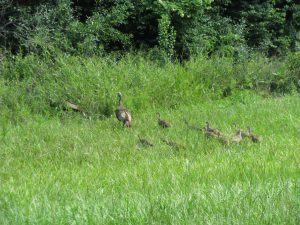
Turkey hen with poults foraging in a grassy field in Gadsden County – photo by Shep Eubanks UF/IFAS
Newly hatched turkeys, referred to as poults, need grassy, open areas so they can find an abundance of insects. Such areas are usually the most critical, and often the most lacking habitat in Florida. Under ideal conditions for turkeys, grassy openings would occupy approximately 25 percent of a turkey’s home range. Additionally, it is of equal importance to have such openings scattered throughout an area, varying in size from 1 to 20 acres such that they are small, or irregular in shape, to maximize the amount of adjacent escape cover (moderately dense vegetation or forested areas that can provide concealment from predators or other disturbances). Large, expansive openings (e.g., large pastures) without any escape cover are not as useful for turkeys since they generally will not venture more than 100 yards away from suitable cover.
Good habitat allows turkeys to SEE approaching danger and to MOVE unimpeded (either to move away from danger or simply to move freely while foraging without risk of ambush). In other words, good habitat provides the right vegetative structure. When thinking about habitat for turkeys, it’s good to always think from a turkey’s point of view….about 3 feet off the ground! Turkeys like open areas where they can see well and easily move.
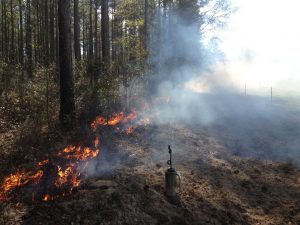
Burning pine land in Gadsden County to improve wild turkey habitat – photo by Shep Eubanks UF/IFAS
One of the best management techniques to manage vegetation structure and composition is prescribed fire. Fire can be very destructive, but if properly applied, fire can be quite beneficial to wildlife and is one of the best things you can do for wild turkeys. When applied correctly, fire has many benefits. Some of the benefits of fire to turkeys and other wildlife include: control of hardwood by setting back woody shrubs and trees in the under story; improving vegetation height and structure; stimulating new herbaceous growth at ground level; stimulating flowering and increased fruit production in some plants; it improves nutritional value and increases palatability of vegetation. All of this leads to increased insect abundance and fewer parasites in the environment. Prescribed fire also has benefits for the landowner. Applied properly and regularly, prescribed fire will reduce risk of catastrophic wildfire which can destroy a timber stand. It reduces hardwood competition so favored pines grow faster and healthier; and reduces the risk of disease, particularly after a thinning or timber cut, by removing logging debris that would otherwise attract insects and disease-causing agents. It can also help control invasive species, and best of all it’s the least expensive option on a cost per acre basis.
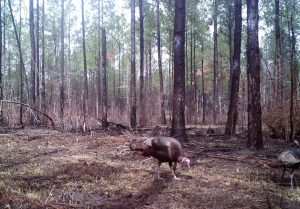
Gobblers in pine stand after burn – Game Camera photo by Shep Eubanks
Another good practice is simply mowing or bush-hogging. Even in areas that aren’t super thick (such as around forest and field edges, or seasonal wetlands), mowing and bush-hogging alone, even without fire, are beneficial as they have much the same effect on the habitat as fire. Basically, you’re removing grown up vegetation and allowing light to reach the ground again. Within pine plantations, roads often provide some of the best, or only, turkey habitat simply because the surrounding vegetation becomes too dense so roads are used for feeding and moving throughout the area. In this regard, wide roads increase the amount of open habitat which provides lots of insects, seeds, and edible vegetation. They also reduce the opportunity for predators to ambush turkeys which can readily occur on narrow roads. Having wide roads is a good land management practice that lets roads dry-out quicker so that they can hold up to traffic better.
If you have pine dominated timber stands on your property, proper thinning is not only good for turkeys, but it’s good for your stand. Young pine stands, particularly those in sapling or early pole stages, are often too thick for wild turkeys, except as escape cover. They get so dense that they shade out everything underneath. They may produce some pine seeds when they get older, but for most of the year, there’s nothing to eat and nothing to attract turkeys to the area. For turkeys, thinning opens up the canopy and allows sunlight to reach the forest floor, which in turn stimulates plant growth of grasses, forbs and soft-mast producing shrubs.
If you have an interest in turkeys, do most management activities outside of the nesting season, which generally runs from the middle of March through June. From a practical standpoint that is not always possible, so on the positive side, if a nest is destroyed (whether by predators or management efforts), a hen will quite often re-nest. Also, the overall importance of management will often outweigh the loss of 1 or 2 nests. The time that turkey nests are at a premium is when a turkey population is low or just trying to get established into an area. In such cases every nest is valuable.
For more information consult with your local Extension Agent .

by Shep Eubanks | Sep 13, 2019

Common Salvinia Covering Farm pond in Gadsden County
Photo Credit – Shep Eubanks UF/IFAS Gadsden County Extension
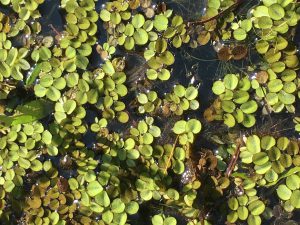
Close up of common Salvinia
Photo Credit – Shep Eubanks UF/IFAS Gadsden County Extension
Aquatic weed problems are common in the panhandle of Florida. Common Salvinia (Salvinia minima) is a persistent invasive weed problem found in many ponds in Gadsden County. There are ten species of salvinia in the tropical Americas but none are native to Florida. They are actually floating ferns that measure about 3/4 inch in length. Typically it is found in still waters that contain high organic matter. It can be found free-floating or in the mud. The leaves are round to somewhat broadly elliptic, (0.4–1 in long), with the upper surface having 4-pronged hairs and the lower surface is hairy. It commonly occurs in freshwater ponds and swamps from the peninsula to the central panhandle of Florida.
Reproduction is by spores, or fragmentation of plants, and it can proliferate rapidly allowing it to be an aggressive invasive species. When these colonies cover the surface of a pond as pictured above they need to be controlled as the risk of oxygen depletion and fish kill is a possibility. If the pond is heavily infested with weeds, it may be possible (depending on the herbicide chosen) to treat the pond in sections and let each section decompose for about two weeks before treating another section. Aeration, particularly at night, for several days after treatment may help control the oxygen depletion.
Control measures include raking or seining, but remember that fragmentation propagates the plant. Grass carp will consume salvinia but are usually not effective for total control. Chemical control measures include :carfentrazone, diquat, fluridone, flumioxazin, glyphosate, imazamox, and penoxsulam.
For more information reference these IFAS publications:
Efficacy of Herbicide Active ingredients Against Aquatic Weeds
Common salvinia
For help with controlling Common salvinia consult with your local Extension Agent for weed control recommendations, as needed.
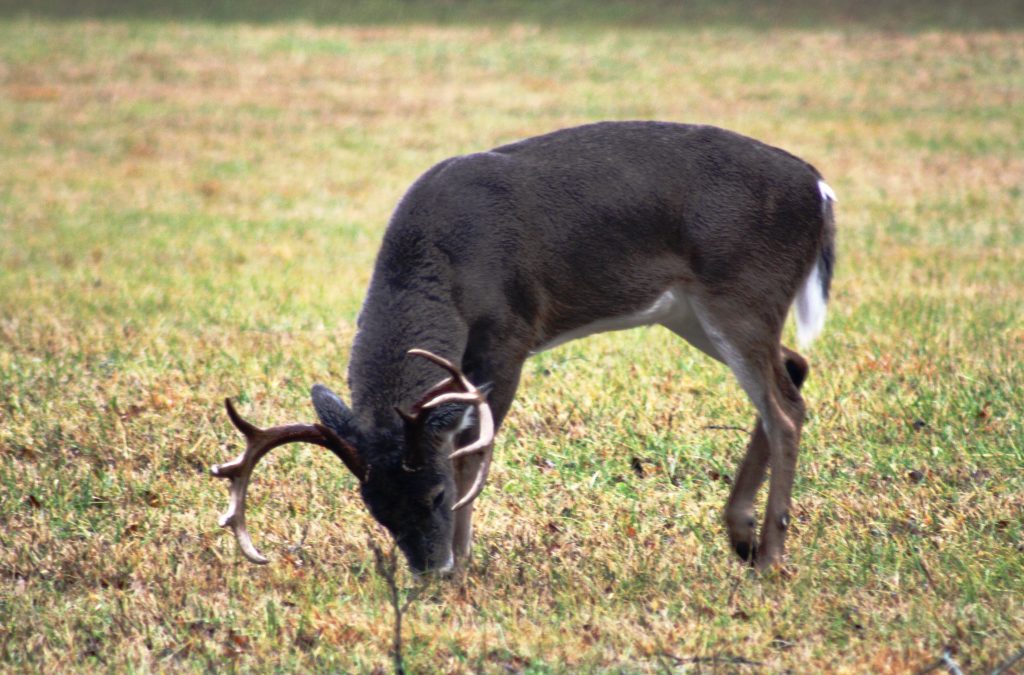
by Shep Eubanks | Sep 12, 2018
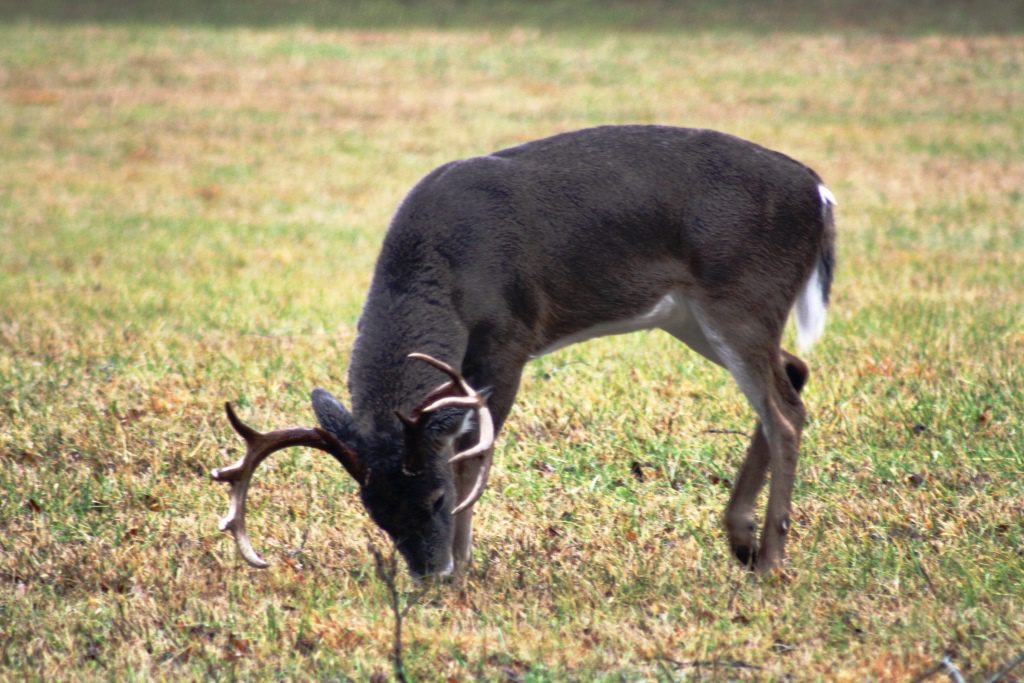
North Florida buck feeding on acorns at the edge of a food plot. Photo Credit – Shep Eubanks UF/IFAS
It’s that time of year when landowners, hunters, and other wildlife enthusiasts begin to plan and prepare fall and winter food plots to attract wildlife like the nice buck in the photo.
Annual food plots are expensive and labor intensive to plant every year and with that thought in mind, an option you may want to consider is planting mast producing crops around your property to improve your wildlife habitat. Mast producing species are of two types of species, “hard mast” (oaks, chestnut, hickory, chinkapin, American Beech, etc.), and “soft mast” (crabapple, persimmon, grape, apple, blackberry, pears, plums, pawpaws, etc.). There are many mast producing trees and shrubs that can be utilized and will provide food and cover for a variety of wildlife species. This article will focus on two, sawtooth oak (or other oaks) and southern crabapple.
Sawtooth Oak
Oaks are of tremendous importance to wildlife and there are dozens of species in the United States. In many areas acorns comprise 25 to 50% of a wild turkeys diet in the fall (see photos 1, 2, and 3) and probably 50% of the whitetail deer diet as well during fall and winter. White oak acorns average around 6% crude protein versus 4.5% to 5% in red oak acorns. These acorns are also around 50% carbohydrates and 4% fat for white oak and 6% fat for red oak.
The Sawtooth Oak is in the Red Oak family and typically produces acorns annually once they are mature. The acorns are comparable to white oak acorns in terms of deer preference as compared to many other red oak species. Most red oak acorns are high in tannins reducing palatability but this does not seem to hold true for sawtooth oak. They are a very quick maturing species and will normally begin bearing around 8 years of age. The acorn production at maturity is prolific as you can see in the photo and can reach over 1,000 pounds per tree in a good year when fully mature. They can reach a mature height of 50 to 70 feet. There are two varieties of sawtooth oak, the original sawtooth and the Gobbler sawtooth oak, which has a smaller acorn that is better suited for wild turkeys. The average lifespan of the sawtooth oak is about 50 years
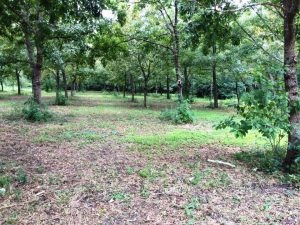
Photo 1 – Seventeen year old planting of sawtooth oaks in Gadsden County Florida. Photo Credit – Shep Eubanks UF/IFAS

Photo 2 – Gadsden County gobblers feeding on Gobbler sawtooth oak acorns
Photo Credit – Shep Eubanks UF/IFAS
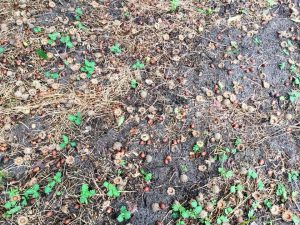
Photo 3 – Gobbler sawtooth oak acorns in Gadsden County. Notice the smaller size compared to the regular sawtooth oak acorn which is the size of a white oak acorn.
Photo credit – Shep Eubanks UF/IFAS
Southern Crabapple
Southern Crabapple is one of 25 species of the genus Malus that includes apples. They generally are well adapted to well drained but moist soils and medium to heavy soil types. They will grow best in a pH range of 5.5 – 6.5 and prefer full sun but will grow in partial shade as can be seen in photo 4. They are very easy to establish and produce beautiful blooms in March and April in our area as seen in photo 5. There are many other varieties of crabapples such as Dolgo that are available on the market in addition to southern and will probably work very well in north Florida. The fruit on southern crabapple is typically yellow green to green and average 1 to 1.5 inches in diameter. They are relished by deer and normally fall from the tree in early October.
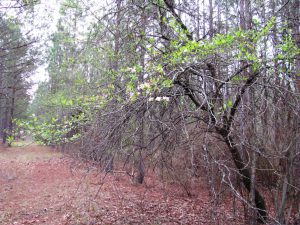
Photo 4 – Southern crabapple tree planted on edge of pine plantation stand. Photo taken in late March during bloom.
Photo credit – Shep Eubanks UF/IFAS
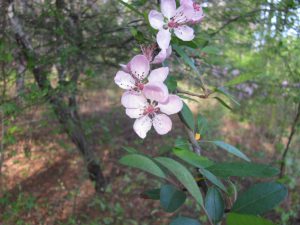
Photo 5 – Showy light pink to white bloom of southern crabapple in early April during bloom.
Photo credit – Shep Eubanks UF/IFAS
A good resource publication on general principles related o this topic is Establishing and Maintaining Wildlife Food Sources.
If you are interested in planting traditional fall food plots check out this excellent article by UF/IFAS Washingon Couny Extension Agent Mark Mauldin: Now’s the Time to Start Preparing for Cool-Season Food Plots .
For more information on getting started with food plots in your county contact your county’s UF/IFAS Extension Office
by Shep Eubanks | Sep 22, 2017
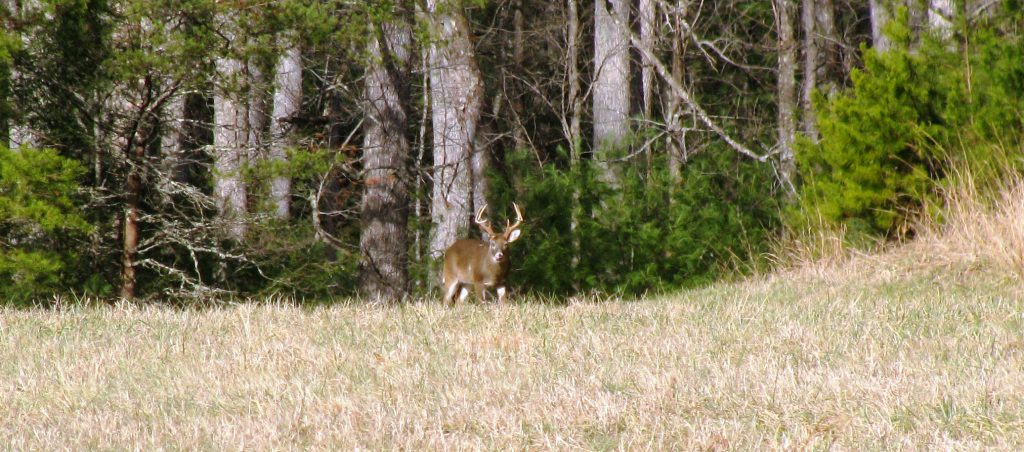
Big Buck on the Move – Photo Credit Shep Eubanks, UF/IFAS
About this time each year the minds of sportsman and wildlife aficionados turn towards the planting of wildlife food plots for use by wildlife in fall, winter , and early spring. There are many factors to consider when planting a fall food plot if you want to be successful in the endeavor. Food plots can be an effective method of providing food sources for game birds, deer, rabbits, raccoons, and other species. The size of food plots vary according to landowner preferences and the requirements of the target wildlife species, but usually they are a minimum of 1/2 to 1 acre in size, with a maximum of 5 acres.
Location is a an important consideration when planning the plot as the most effective plots typically are located adjacent to sanctuary or escape cover that provides security for wildlife. Food plots that meander along edges of of two or there converging types of cover, such as the edge created where pine plantations, hardwood bottoms, and agricultural fields intersect, are very attractive to wildlife and provide natural travel corridors, in addition to providing a high nutrition food source.
Successful planting of your crop begins with soil sampling. Having the proper pH in your food plot is of paramount importance. A pH of 6.5 is ideal for winter annual grasses and legumes in North Florida. As an Ag Agent I have seen more food plot disasters because a landowner did not take time to soil test than any other reason. The soil test will also guide you in applying proper fertilization to optimize productivity of your food plots. Food plots are expensive to establish and you want to avoid needless mistakes such as poor fertility that will yield poor results.
Preparation of a good seedbed is also very important as is selection of seeds that are adapted to our area. UF/IFAS has developed some excellent resources that will assist you in selecting forages that do well in our area such as, A Walk on the Wild Side: 2013 Cool-Season Forage Recommendations for Wildlife Food Plots in North Florida. Another Excellent reference is Establishing and Maintaining Wildlife Food Sources.
Now is the time to make your preparations for planting your successful cool season food plot here in North Florida! hopefully you will have the experience of seeing and enjoying wildlife as pictured in photo 2 and photo 3!
For more information on planting successful food plots this fall, contact your local UF/IFAS Extension office.
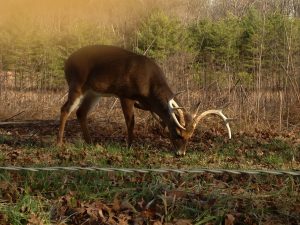
Photo 2. Nice Buck grazing woods edge food plot in North Florida Photo Credit – Shep Eubanks, UF/IFAS
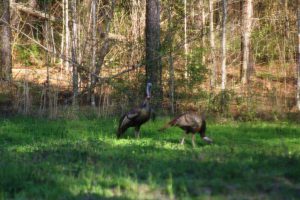
Photo 3. Gobbler and Hen Standing in Crimson Clover
Photo Credit – Shep Eubanks, UF/IFAS





















